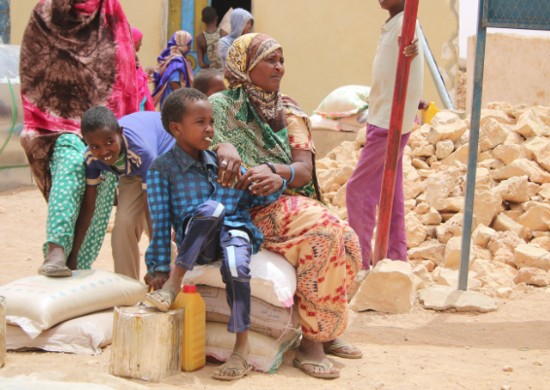If any continent is suffering disproportionately from climate change it is Africa. The risks to the continent include drought, heatwaves, floods, low crop yields, famine, vector-borne disease spread, declining productivity, climate-related migration, water rights and land territorial conflicts, and more.
Subsaharan Africa saw a tripling in drought conditions after 1970. Extreme rainfall and weather impacted many nations in Southern Africa. Disease vectors rose dramatically with increases in malaria, dengue, Lassa and Rift Valley fever, Lyme disease, Ebola, West Nile Virus and others. Diarrhoeal diseases including incidents of cholera contributed to rising senior and infant deaths, particularly in areas where extreme weather caused extensive prolonged flooding. Those same areas experienced crop failures with food insecurity, malnutrition and famine responsible for an additional 1.7 million annual deaths across the continent. All of these conditions contributed to a 20% decline in the gross domestic product (GDP) in affected countries.
The sad tale of Africa is made even worse when you consider that its countries contributed far fewer greenhouse gas (GHG) emissions than the rest of the globe. So the least responsible have become the most imperilled.
Africa, today, is at the frontline of the climate crisis. The solution to its many challenges lies both within the continent but also elsewhere. Only the rapid reduction in GHG emissions from the largest contributors of these global warming gasses can begin to reverse the damage already done. But that alone will not be enough. African countries need financial and human resources to mitigate and adapt to ongoing climate changes. The longer Africa descends the spiral, the more destabilizing the continent will become with implications for the rest of the planet.
Today nations like Russia and China are exploiting the downward spiral. Russia is doing it with military assistance feeding growing conflicts. China is offering to build infrastructure like coal-fired thermal power plants that contribute even more GHGs to the air and financing them with loans that these countries cannot afford.
The Paris Climate Agreement of 2015 saw almost every nation on the planet agree to enact policies targeting the limiting of atmospheric warming to an ideal 1.5 Celsius (2.7 Fahrenheit) with an upper limit of 2 Celsius (3.6 Fahrenheit). At the time it was agreed that beyond these upper limits the world would experience environmental tipping points with catastrophic global consequences for humanity and all living things on the planet. Part of the Paris Agreement was a commitment by rich polluting nations to finance the nations most imperilled and least responsible for climate change to the tune of USD 100 billion annually. These were to be loaned to countries to finance adaptation and mitigation projects.
The money has yet to flow to these countries seven years later. This lack of execution of promises made is appalling. But it isn’t just the breaking of commitments to imperilled nations that is fallout from the Paris Agreement. Most of the biggest GHG-contributing polluters are not close to meeting targets despite all their public declarations. Canada is no exception with its attempts to counterbalance carbon pricing and fossil-fuel-production policies.
Russia is a pariah state with its war in Ukraine destabilizing global energy supplies and causing us to take our eyes off the existential challenges we face.
Brazil and Indonesia continue to destroy their rainforests. A megadrought dominates the American southwest causing the Colorado and Rio Grande Rivers to go dry. Extreme weather causes a third of Pakistan to be submerged. Meanwhile, rising sea levels increasingly erode coastlines and contaminate coastal freshwater aquifers with salt.
Depletion of the oceans continues with coral deaths and declines in fish populations. We read about ice sheets of doom in Antarctica, Greenland ice melt, and the disappearance of alpine glaciers that feed many of the major rivers where the largest concentrations of human populations live. It is our comeuppance for the lack of focus we are demonstrating in addressing the existential issue of modern times.
And then we remain amid a global COVID-19 pandemic that continues to test the limits of our technological, political and social competence. Despite the assertions of politicians and some medical “experts,” the pandemic is not over. We don’t have global herd immunity. What we have is growing pandemic fatigue leaving us more susceptible to the virus as we reduce our vigilance and the virus incubates and evolves in large numbers of us.
COP27 convenes in November in Sharm El-Sheikh, Egypt. It seems fitting that the conference is taking place in Africa. Among its many objectives is to see the disbursement of $100 billion annually to the most at-risk nations, identifying where, when and how much each country needs.
The original language related to the $100 billion described the money as loans to nations in need. One of COP27’s objectives should be to change the commitment from loans to grants. That would speak to the need to compensate those at risk who contribute least to global warming from those with money that also produce the majority of emissions.
COP27 should also continue to build on Glasgow’s COP26 focus on getting the private sector to participate as equal stakeholders in global climate outcomes. Industrial, financial, and other commercial partners should commit to delivering scaleable solutions to mitigate and adapt to climate change and provide the technology and expertise to African countries and elsewhere.
The atmosphere has already warmed more than 1 Celsius (1.8 Fahrenheit) and the warming is accelerating. We could blow past 1.5 Celsius (2.7 Fahrenheit) early in the next decade. Back in 2000, very few if any climatologists would have predicted that rate of increase. That’s why we can’t slacken our resolve even in the face of other geopolitical issues. Political and business leaders have to act now.








